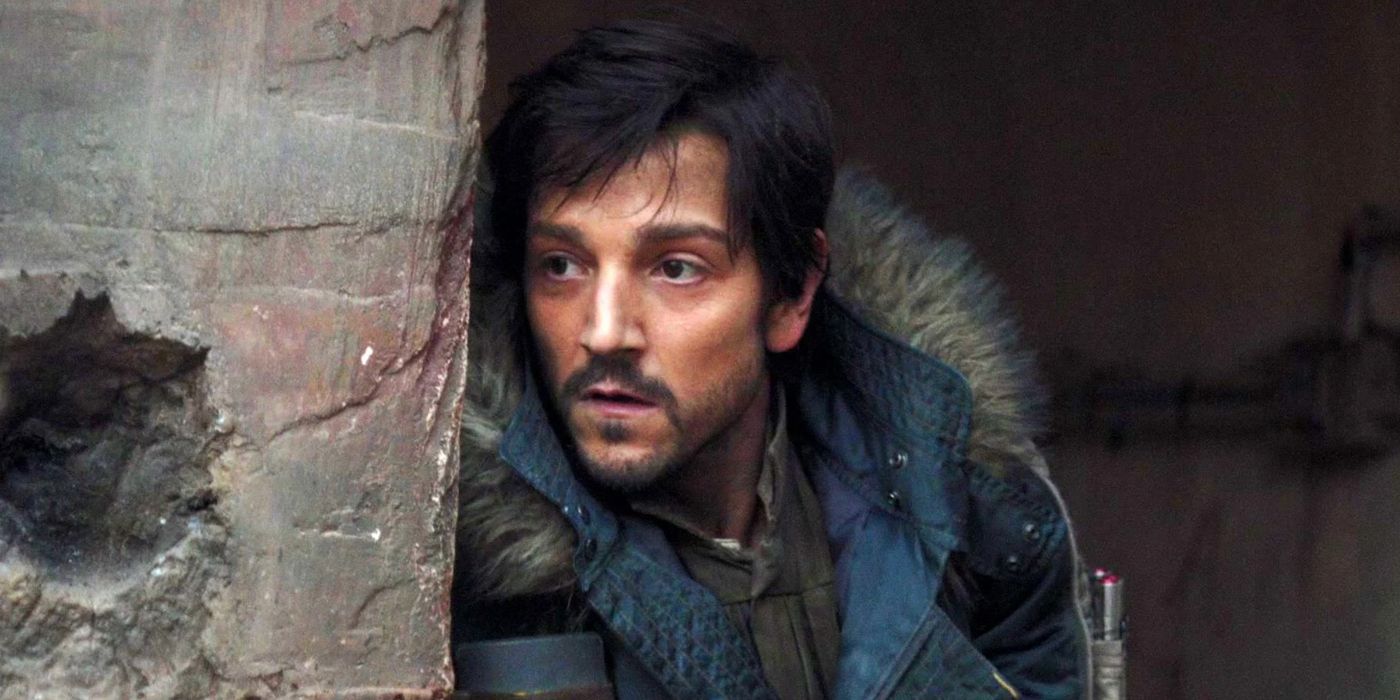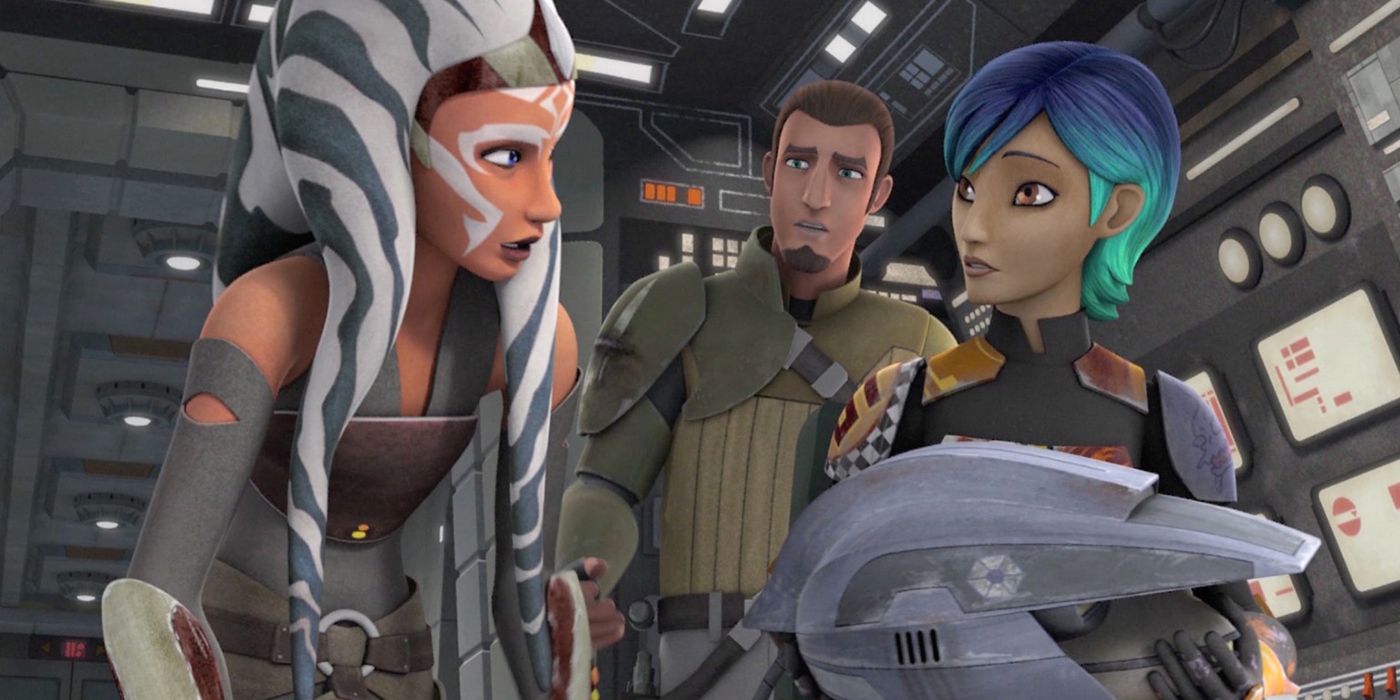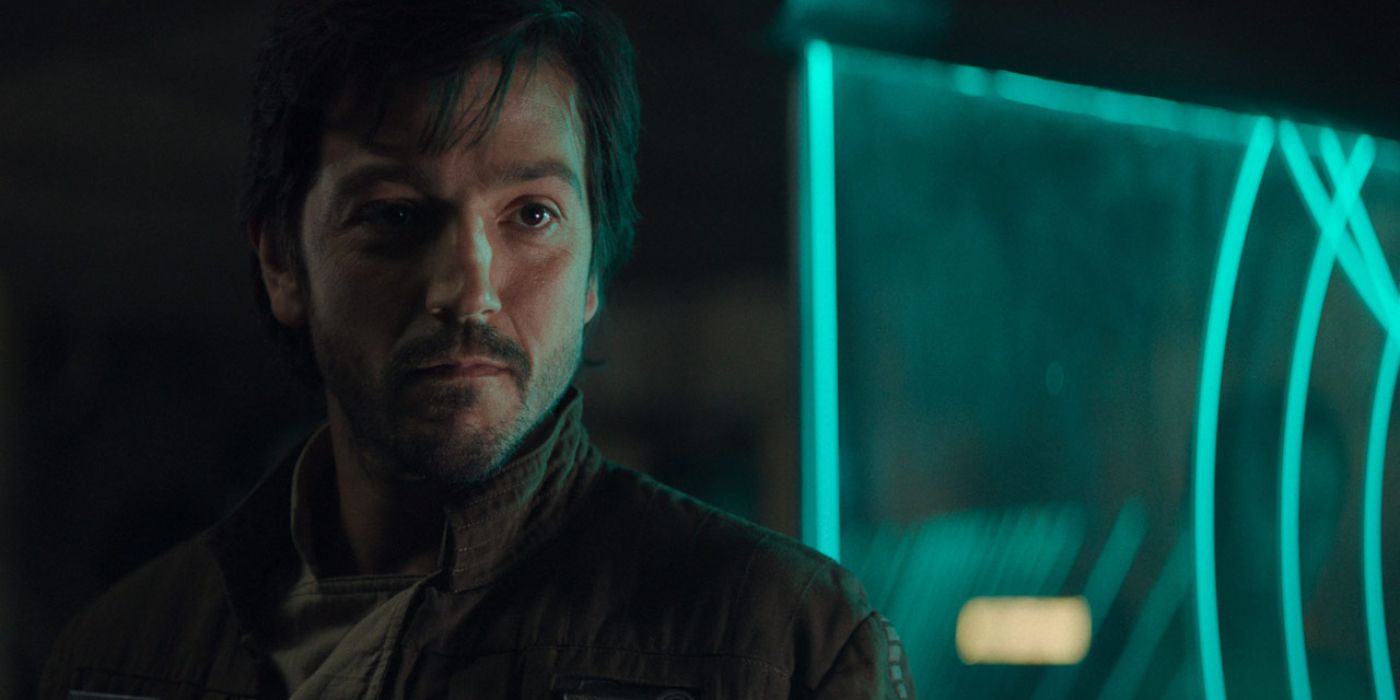On September 21, Andor will officially join the pantheon of Disney+ Star Wars TV series. Though they all take place long ago in the same galaxy far, far away, they nevertheless have so far covered various time periods within their shared universe. The Mandalorian and The Book of Boba Fett currently take place at the same time – 9 ABY, five years after the fall of the Galactic Empire. Obi-Wan Kenobi, meanwhile, takes place nine years before A New Hope. Andor is unusual in that it’s covering a wider time period than its predecessors: a two-season event, the first installment will take place over a year, while a second part will cover four, depicting each year in 3-episode blocks and ending right before Rogue One. Here’s where Andor fits into the chronology of the sprawling Star Wars canon.
The dating system for the Star Wars timeline uses the Battle of Yavin as a base point. Events that occur after the Battle of Yavin are denoted ABY, and those that occur before are denoted BBY. It is true that the Battle of Yavin, in which the first Death Star is destroyed, may not make much sense as the center of history; nevertheless, it is a vital battle whose presence in A New Hope makes it convenient as a mid-point for other events in the franchise's canon. During a panel at TCA 2022, Andor showrunner Tony Gilroy revealed that the first season begins in 5 BBY, five years before the main events of Rogue One and the beginning of A New Hope. The second season, therefore, will take place from 4 to 0 BBY. By 5 BBY, it's been 14 years since Revenge of the Sith — and the Galactic Empire has held ultimate power over the Galaxy for that same amount of time. The Rebellion’s struggle against the Empire officially referred to as the Galactic Civil War, begins in 4 BBY, a year after the beginning of Andor's first season and during the same year as the beginning of its second season. 5 BBY is therefore a perfect year in which to explore the beginning of the revolution that will take shape over the next five years and go on to define the original trilogy.
Star Wars: Rebels also begins in 5 BBY and ends in 0 BBY, and so far provides the franchise's most detailed glimpse of this time period. Technically, the senate remains intact, though it is now the Imperial Senate rather than the Galactic Senate. Unfortunately, it cannot form any real check against the Emperor’s (Ian McDiarmid) power, despite the best efforts of senators such as Bail Organa (Jimmy Smits) and Mon Mothma (Genevieve O'Reilly, Caroline Blakiston). It soon becomes clear that the only way to save the galaxy is through armed resistance. Andor will see the return of Saw Guerrera (Forest Whitaker), whose Partisans are at this time a violent insurgent group against the Empire. Organa and Mothma end up creating the Rebel Alliance partly by uniting disparate individual insurgent groups such as the Partisans and other rebel cells called the Massassi group, the Phoenix cell, and the Specters into an organized fighting force.
Andor will likely see the early days of this organizing process. The Specters are the protagonists of Rebels, and 5 BBY is also the year that Ezra Bridger (Taylor Gray) first joins the group. Other members of the Specters, or Ghost team, include Captain Hera Syndulla (Vanessa Marshall), Jedi Kanan Jarus (Freddie Prinze Jr.), Mandalorian Sabine Wren (Tiya Sircar), Garazeb Orrelios (Steve Blum), and Chopper the astromech droid. During this time period, informants known as Fulcrums also help the separate rebel cells by gathering and distributing intelligence. Ahsoka Tano (Ashley Eckstein) proposes the idea and becomes the most notable Fulcrum agent.
Rogue One and the 2016 sourcebook Rogue One: The Ultimate Visual Guide additionally confirms that, during the Clone Wars, Cassian Andor (Diego Luna) was a child soldier fighting from the Confederacy of Independent Systems, also known as the Separatist Alliance. This makes him an unusual character in the Star Wars universe since almost all sympathetic characters in the franchise who are alive during the prequel era are fighting on the side of the Republic. Taking this context into account, by Rogue One, Cassian’s entire life has been rooted in rebellion — first against the Republic, then against the Empire. Situating the show in 5 BBY means that Cassian is currently between rebellions. The Rebel Alliance has not yet formed, and yet the Separatist Alliance no longer exists. The inception of the Rebel Alliance would give Cassian a new cause, as well as the hope that is so central to the message of Rogue One and to Star Wars in general. Focusing on a character who fought for the Separatist Alliance during the Clone Wars also provides an opportunity for more world-building and a more nuanced look at the intergalactic conflict of the prequel era.
Star Wars: The Clone Wars already accomplishes this to some extent by introducing sympathetic Separatist characters such as Mina (Kath Soucie) and Lux (Jason Spisak) Bonteri. However, Lux leaves the confederacy after Count Dooku’s (Christopher Lee/Corey Burton) agents kill his mother, thereby continuing the impression that the Republic is generally the more sympathetic of the two opposing sides. However, having a major character like Cassian who never allied with the Republic when it existed might show another side to the Separatist Alliance. After all, fighting for the Separatists and fighting against the Empire are not incompatible, since in the end the entire war was being controlled from the shadows by Darth Sidious. When confronting Jyn Erso (Felicity Jones) in Rogue One, Cassian says, "Suddenly the rebellion is real for you... I've been in this fight since I was six years old." It seems, therefore, that once he joins the rebellion against the Empire, he regards that fight as an extension of his fight against the Republic in his childhood during the Clone Wars.
By virtue of its protagonist and the time in which it is set, Andor inevitably connects the stories of Rogue One (and therefore the original trilogy), Star Wars: The Clone Wars, and Star Wars: Rebels. It may seem that Rebels’ and Andor’s concurrent timelines point to some kind of intersection between the two series; however, this isn’t necessarily a given, precisely because the various resistance cells are, in the beginning, all operating independently of one another. Jyn Erso is also initially involved in these insurgent movements. In fact, while 5 BBY is the beginning of Cassian’s career in the rebellion, it is the end of Jyn’s (before the events of Rogue One bring her back). This is because 5 BBY is the year that Saw Guerrera, who found Jyn as a child and raised her, abandons her. The Disney-Lucasfilm novel Rebel Rising provides us further backstory for Jyn’s life and confirms that, after being adopted by Saw Guerrera, she becomes one of his Partisans. In 5 BBY, however, on a mission to Tamsye Prime, her identity as Galen Erso’s (Mads Mikkelsen) daughter is compromised, and Saw leaves her behind. Though Jyn and Cassian will not share the screen until Rogue One, with this information, their parallel fates now seem to further foreshadow their eventual meeting and tragic end. In 5 BBY, Jyn and Cassian’s places officially switch: as she turns her back on the rebellion for the first time, Cassian finds it once again.
Andor Season 1 comes to Disney+ with its first three episodes on September 21. A second season intended to conclude the series and lead into Rogue One is already in development.



